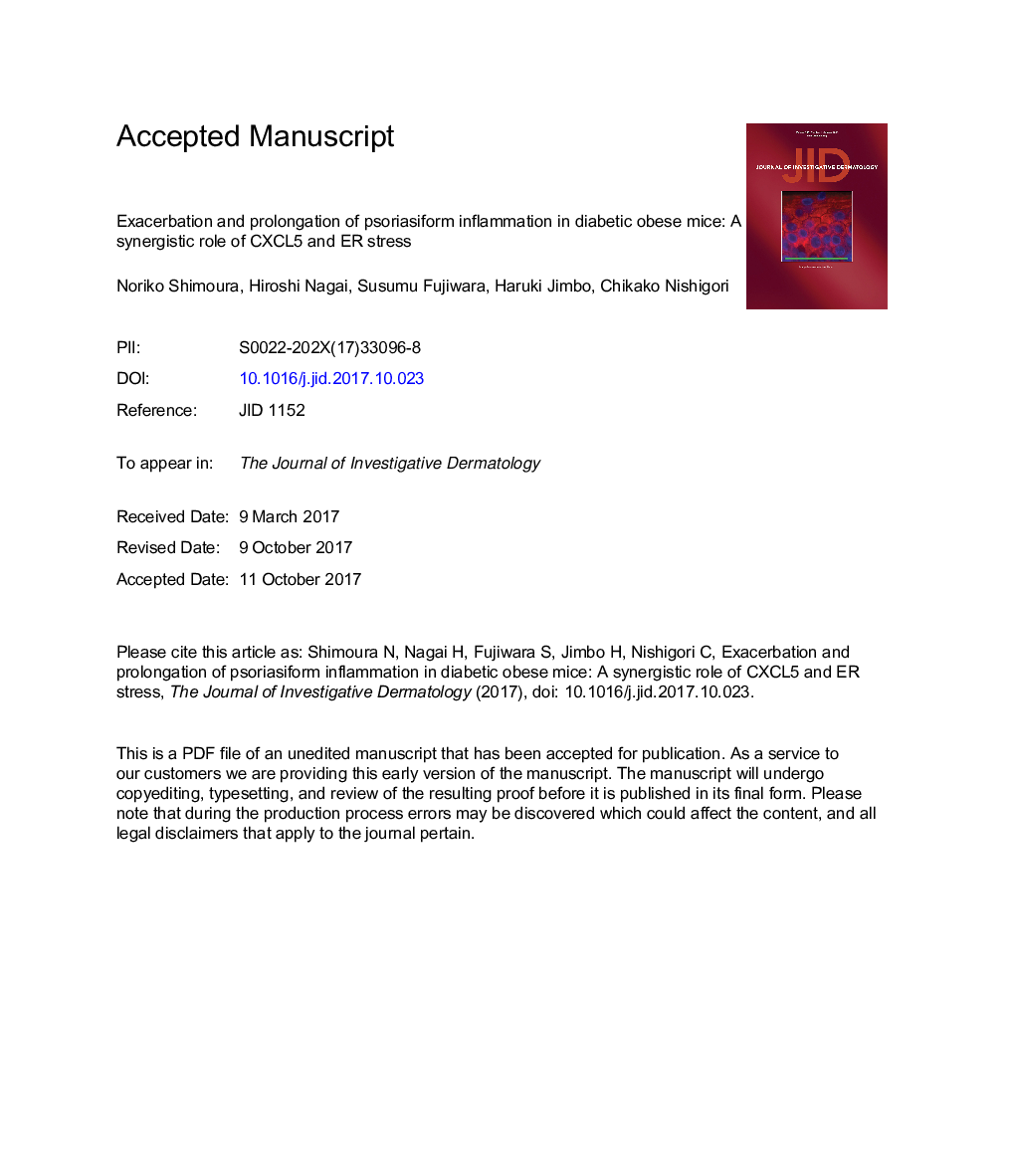| Article ID | Journal | Published Year | Pages | File Type |
|---|---|---|---|---|
| 8716112 | Journal of Investigative Dermatology | 2018 | 33 Pages |
Abstract
Accumulating evidence suggests that psoriasis is frequently accompanied by metabolic disorders, such as obesity and diabetes. However, the mechanisms underlying the association between increased psoriasis severity and concomitant metabolic syndrome have not been fully clarified. Herein, we show that imiquimod-induced psoriasiform inflammation was exacerbated and prolonged in diabetic obese mice compared to that in control mice, accompanied by remarkably increased lesional expressions of Cxcl5 and Il-1b. Notably, a large number of CXCL5+ Ly6G+ cells infiltrated the dermis and subcutaneous fat tissue of the diabetic obese mice. Most macrophages in the subcutaneous fat tissues of the diabetic obese mice were positive for expression of IL-1β and GRP78/Bip, an endoplasmic reticulum stress marker. Depletion of Ly6G+ cells and macrophages diminished the imiquimod-induced psoriasiform inflammation. Further, CXCL5 potentiated the secretion of IL-1β from macrophages and palmitic acid, a fatty acid released from subcutaneous adipocytes, further enhanced IL-1β secretion via endoplasmic reticulum stress induction. Combined with the fact that the serum levels of both CXCL5 and palmitic acid are significantly elevated in patients with metabolic syndrome, our results suggest a role for CXCL5 and endoplasmic reticulum stress in the increase of psoriasis severity of patients with concomitant metabolic syndrome.
Related Topics
Health Sciences
Medicine and Dentistry
Dermatology
Authors
Noriko Shimoura, Hiroshi Nagai, Susumu Fujiwara, Haruki Jimbo, Chikako Nishigori,
